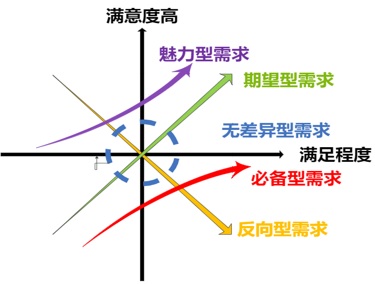 PDF(1391 KB)
PDF(1391 KB)


Research on the Way of Public Health Emergencies Information Disclosure Based on Kano Model and Public Demand
Han Pu, Yan Xiaodong, Li Huiyuan
Knowledge Management Forum ›› 2023, Vol. 8 ›› Issue (1) : 28-39.
 PDF(1391 KB)
PDF(1391 KB)
 PDF(1391 KB)
PDF(1391 KB)
Research on the Way of Public Health Emergencies Information Disclosure Based on Kano Model and Public Demand
[Purpose/Significance] Information disclosure is an inevitable requirement for the response to public health emergencies and the construction of a transparent government. Its disclosure way has a very important impact on the public's timely, comprehensive and accurate access to information. [Method/Process] Firstly, through literature review and public interview, combined with national information disclosure regulations, 17 major ways of public health emergency information disclosure were sorted out. Second, the public needs were collected based on the questionnaire designed by Kano model, and the public needs were divided into four categories according to the maximum frequency method. Then, based on the hierarchy of needs analysis, mixed class analysis and Better-Worse analysis, the way of information disclosure is deeply explored. [Result/Conclusion] Through demand level and mixed class analysis, government websites, Weibo, SMS, TV rolling subtitles and important news push are necessary requirements; short video, media platform, radio, TV, information bulletin boards and electronic information screen are attractive demand; the government's official WeChat account, press conference and government hotline are public expectation requirements; Weibo, SMS, TV rolling captions and important news push are mixed requirements. Finally, the importance and priority of various project elements from the Better-Worsedimension are analyzed. This study provides a basis for the selection of public health emergencies information disclosure methods, and is of great significance to further improving the information disclosure mechanism of public health emergencies.

Kano model / public health emergencies / public demand / information disclosure method
| [1] |
黄林.我国政府信息公开的问题及对策研究[D]. 济南:山东师范大学,2016.
|
| [2] |
黄颖川.新冠肺炎疫情下的政府舆情应对与信息公开——广州市人民政府新闻发布会的成功做法[J].南方传媒研究,2020(4):50-57.
|
| [3] |
史少春.加强信息公开与新闻宣传,做好重大突发事件舆论引导[J].中国行政管理,2020(2):27-28.
|
| [4] |
肖诗依,文庭孝.后疫情时代重大突发公共卫生事件信息公开质量影响因素分析——立足公众视角[J].图书情报工作,2021,65(23):41-49.
|
| [5] |
赵润娣,黄雪凤.公共需求视角下的我国突发公共卫生事件信息公开问题探析[J].现代情报,2020,40(6):27-37.
|
| [6] |
韩玮,陈樱花,陈安.基于Kano模型的突发公共卫生事件信息公开的公众需求研究[J].情报理论与实践,2020,43(5):9-16.
|
| [7] |
刘晓娟,王晨琳.基于政务微博的信息公开与舆情演化研究——以新冠肺炎病例信息为例[J].情报理论与实践,2021,44(2):57-63.
|
| [8] |
何文盛,李雅青.突发公共卫生事件中信息公开共享的协同机制分析与优化[J].兰州大学学报(社会科学版),2020,48(2):12-24.
|
| [9] |
张诗瑶,李博楠.全媒体视域下突发事件的信息公开——以新冠肺炎疫情为例[J].青年记者,2020(26):58-59.
|
| [10] |
杨雯,崔冬.突发公共卫生事件中的政府信息公开问题及其破解[J].中国应急管理科学,2020(12):55-65.
|
| [11] |
MAXWELL T A. The public need to know: emergencies, government organizations, and public information policies[J]. Government information quarterly, 2003, 20(3): 233-258.
|
| [12] |
DAWES S S, PARDO T A, CRESSWELL A M. Designing electronic government information access programs: a holistic approach[J]. Government information quarterly, 2004, 21(1): 3-23.
|
| [13] |
RIESENER M, DöLLE C, SCHUH G, et al. Framework for defining information quality based on data attributes within the digital shadow using LDA[J]. Procedia CIRP, 2019, 83: 304-310.
|
| [14] |
黄种滨,孟天广.突发公共危机中的政府信息公开与危机应对[J].电子政务,2022(6):63-74..
|
| [15] |
段尧清,周密,尚婷. 我国政府信息公开态势及其调控策略研究——基于2008-2018年国务院部门政府信息公开年报分析[J].现代情报,2020,40(8):121-128.
|
| [16] |
马征.提升政府信息公开满意度的路径探索[J].法制博览,2020(16):241-242.
|
| [17] |
曾祥敏,张子璇.场域重构与主流再塑:疫情中的用户媒介信息接触、认知与传播[J].现代传播(中国传媒大学学报),2020,42(5):65-74.
|
| [18] |
YANG T M, LO J, SHIANG J. To open or not to open? determinants of open government data[J]. Journal of information science, 2015, 41(5): 596-612.
|
| [19] |
徐光,白明莹,高阳,等. 基于公众需求的政府信息公开程度ANP评价研究[J].情报科学,2016,34(8):89-93.
|
| [20] |
施国洪,岳江君. Kano模型在图书馆服务质量管理中的应用研究[J].情报杂志,2009,28(8):57-61.
|
| [21] |
汤淼,王铁旦,彭定洪.用户感知移动图书馆服务质量评价的犹豫模糊Kano-Taguchi方法[J].情报理论与实践,2020,43(3):105-110.
|
| [22] |
PAI F Y, YEH T M, TANG C Y. Classifying restaurant service quality attributes by using Kano model and IPA approach[J]. Total quality management & business excellence, 2018, 29(3/4): 301-328.
|
| [23] |
BI J W, LIU Y, FAN Z P, et al. Modelling customer satisfaction from online reviews using ensemble neural network and effect-based Kano model[J]. International journal of production research, 2019, 57(22): 7068-7088.
|
| [24] |
易明,宋进之,李梓奇.基于Kano模型的高校智慧图书馆功能需求研究[J].图书情报工作,2020,64(14):45-53.
|
| [25] |
TAN K C, XIE M, SHEN X X. Development of innovative products using Kano's model and quality function deployment[J]. International journal of innovation management, 1999, 3(3): 271-286.
|
| [26] |
HUISKONEN J, PIRTTILA T. Sharpening logistics customer service strategy planning by applying Kano's quality element classification[J]. International journal of production economics, 1998, 56: 253-260.
|
| [27] |
MATZLER K, HINTERHUBER H H. How to make product development projects more successful by integrating Kano's model of customer satisfaction into quality function deployment[J]. Technovation, 1998, 18(1): 25-38..
|
| [28] |
BERGER C, BLAUTH R, BOGER D. Kano's methods for understanding customer-defined quality[J].Center for quality management journal,1993(4):3-36.
|
| [29] |
NILSSON W L, FUNDIN A. Dynamics of service attributes: a test of Kano's theory of attractive quality[J]. International journal of service industry management, 2005, 16(2):152-168.
|
| [30] |
杨大越. 我国政府信息公开申请法律保障之探究——以《中华人民共和国政府信息公开条例》第十三条修改为视角[J]. 行政与法, 2020(2):92-98.
|
| [31] |
中华人民共和国政府信息公开条例[J].中华人民共和国国务院公报,2019(12):11-18.
|
| [32] |
张兆阳,吕妍,罗思琪,等.突发公共卫生事件背景下微博影响力评价——以20家主流媒体微博为例[J].信息资源管理学报,2021,11(2):16-27.
|
| [33] |
ALAVI M, LEIDNER D E. Knowledge management and knowledge management systems: conceptual foundations and research issues[J]. MIS quarterly,2001, 25(1):107-136.
|
| [34] |
王馨悦,刘畅.重大突发公共卫生事件中公众信息搜寻行为影响因素探究[J].图书情报工作,2020,64(21):77-89.
|
| [35] |
邓胜利,李雅静.突发公共卫生情境下中老年人虚假健康信息应对行为研究[J].情报资料工作,2021,42(2):43-51.
|
| [36] |
周效章.高校数字资源社会化服务的用户需求属性分析——基于Kano模型[J].情报杂志,2019,38(10):200-207.
|
| [37] |
LEE M C, NEWCOMB J F. Applying the Kano methodology to meet customer requirements: NASA's microgravity science program[J]. Quality management journal, 1997, 4(3): 95-106.
|
韩普:研究方案设计、论文撰写、论文修改;
闫晓东:模型构建、数据收集、数据分析、论文撰写;
李慧媛:数据分析、论文修改。
/
| 〈 |
|
〉 |